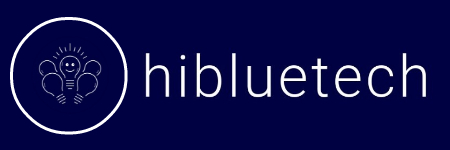As AI (Artificial Intelligence) continues to evolve, the need for smarter, faster, and more energy-efficient systems is greater than ever. Neuromorphic computing vs. Conventional AI represents this shift: while conventional AI relies on powerful components like GPUs and TPUs to handle large tasks, it consumes substantial energy and can struggle with scalability. Neuromorphic computing, inspired by the human brain, offers an alternative with its low-power, adaptable design, making it ideal for smaller, autonomous devices like robots, wearables, and IoT (Internet of Things) gadgets that need to make real-time decisions on limited power.
In this guide, we’ll explain the main differences between neuromorphic AI and conventional (or “regular”) AI, showing where each one shines, the real-world problems they can solve, and how both of them together could lead to even smarter, more sustainable technology in the future.
What is Neuromorphic Computing? The Brain-Inspired Approach to Energy-Efficient AI
Did you know that your brain only uses about 20 watts of energy about the same as a low-power light bulb? That’s pretty amazing, considering how much your brain does, like making decisions, recognizing faces, and even thinking about math! Neuromorphic computing, which comes from the word “neuron” (a brain cell), tries to copy how the brain works. It’s a type of AI designed to use very little power while doing complex tasks quickly.
Neuromorphic systems use something called “spiking neural networks.” These are built to behave like brain cells, which only turn on and work when needed. This means neuromorphic AI doesn’t have to be “on” all the time and can save a lot of energy. Because of this, neuromorphic chips are perfect for devices that need to run on battery power for a long time, like a smartwatch, a sensor on a robot, or a small camera that needs to make quick decisions.
Neuromorphic Computing vs. Conventional AI: Architecture and Energy Efficiency
Neurons vs. Regular Networks
- Neuromorphic AI: It uses “spiking” neurons, which are a lot like brain cells. These neurons only work when they need to, which saves energy. This makes neuromorphic AI very fast and adaptable meaning it can change based on what’s happening around it. This is great for things like robots that need to move and react quickly.
- Regular AI: Regular AI systems use a different type of network called a “feedforward neural network.” These systems process information all the time, even if it’s not needed right away, so they need a lot more power to work. This type of AI is great for big tasks like recognizing images or understanding sentences but isn’t practical for devices that need to run on small batteries.
Sequential vs. Event-Driven Processing
- Regular AI: This type of AI is designed to work on large amounts of data in order, or sequentially, and needs big, powerful computers. It’s often used in data centers, where massive amounts of information are processed.
- Neuromorphic AI: Neuromorphic systems work in an event-driven way, meaning they only act when something important happens. This makes them very efficient for tasks that require quick responses, like controlling a robot or analyzing real-time sensor data on a device.
Why Neuromorphic AI is Ideal for Real-Time, Low-Power Applications
Neuromorphic AI is designed to be super-efficient, meaning it can run on very little energy while still being fast. This makes it ideal for real-time applications; those are tasks where the AI has to respond instantly, without delay.
- Power Efficiency: Regular AI models depend on power-hungry processors (GPUs and TPUs), which makes them difficult to use on small devices like smartwatches or smart home gadgets. Neuromorphic AI, on the other hand, can handle complex tasks using very little power, making it perfect for devices that don’t have a lot of energy.
- Unique Uses: Neuromorphic AI is best for tasks that need quick reactions, like navigating a robot or processing sensory data. Regular AI is better for tasks that need heavy data processing, like predicting what someone might want to buy online or understanding natural language (like when you talk to a virtual assistant).
Integrating Neuromorphic and Traditional AI for Sustainable, Scalable AI Solutions
As AI becomes more common in areas like smart homes, autonomous vehicles, and robots, the need for energy-saving AI solutions keeps growing. Neuromorphic AI is great at handling tasks directly on the device, which saves power by reducing the need to send data to the cloud. Experts think a future where neuromorphic AI combines with regular AI and even quantum computing could lead to much smarter, energy-efficient technology.
A Quick History of AI: From Simple Programs to Neuromorphic Computing
AI has come a long way! It started with symbolic AI in the 1950s, which was used to solve simple problems. By the 1990s, machine learning and deep learning were taking off, helping AI learn from data. Then, in the 1980s, researchers started exploring neuromorphic computing to make AI even more efficient by copying how the brain works.
Neuromorphic Chips vs. GPUs and TPUs: Choosing the Right AI Hardware
Neuromorphic chips differ significantly from conventional GPUs and TPUs. While GPUs handle large datasets with parallel processing, neuromorphic chips process information by only activating neurons upon signal reception, saving substantial energy. This approach is ideal for IoT, wearables, and edge computing, where power efficiency is paramount.
Memory Integration for Faster, Lower-Power Processing
Inspired by the brain’s structure, neuromorphic chips integrate memory and processing functions to reduce latency and power consumption. This design is advantageous for real-time applications, allowing the system to respond immediately to new data.
Adaptive Processing in Sensory-Driven Devices
Neuromorphic systems adjust instantly to new inputs, enabling real-time responses in robotics and other sensory-driven devices. This adaptability is vital for industries that depend on immediate data processing, like manufacturing and environmental monitoring.
Key Applications: Neuromorphic AI in IoT, Robotics, and Beyond
Neuromorphic computing is transforming multiple sectors by delivering real-time processing and energy efficiency in applications where power resources are limited.
- Medical Devices: In healthcare, neuromorphic processors empower wearable devices to monitor vitals continuously, providing real-time, on-device feedback critical for patients needing constant monitoring.
- Internet of Things (IoT): Neuromorphic technology enhances IoT devices, enabling low-power, real-time processing. For example, smart sensors equipped with neuromorphic chips can track environmental data independently from centralized cloud systems, boosting efficiency in everyday use.
- Robotics: Neuromorphic chips offer sensory processing and decision-making capabilities essential for autonomous robots and drones. They enable rapid responses to visual or audio inputs, making robots safer and more efficient in settings like manufacturing.
Neuromorphic AI for Improved User Experiences in Consumer Devices
In devices you might use every day, like smart home devices and wearables, neuromorphic computing offers instant responses. This makes devices more reliable and responsive, improving user experience by reducing delays. While regular AI relies on cloud computing, which can introduce delays, neuromorphic AI processes information right on the device, making everything faster and more dependable.
Addressing Technical Challenges in Neuromorphic and Conventional AI
Although both types of AI have amazing potential, they also face some challenges:
- Scalability: Regular AI needs a lot of resources, which can make it hard to use on smaller devices. Neuromorphic AI is efficient but needs specialized hardware, which isn’t yet as widely available.
- Hardware and Software Compatibility: Regular AI has many tools and platforms like TensorFlow, while neuromorphic AI still relies on specialized chips like Intel’s Loihi, which aren’t as accessible or well-supported yet.
The Future of AI: Integrating Neuromorphic, Quantum, and Conventional AI
As AI technology progresses, hybrid systems combining neuromorphic, quantum, and traditional AI are emerging. Each AI type offers unique benefits:
- Complementary Roles: Conventional AI handles complex data analysis, neuromorphic AI processes sensory data in real time, and quantum computing provides immense processing power for fast analysis and model training.
Hybrid AI Applications:
- Healthcare: Quantum AI analyzes large datasets, conventional AI predicts health outcomes, and neuromorphic AI monitors patients in real time.
- Autonomous Vehicles: Quantum computing optimizes routes, conventional AI processes environmental data, and neuromorphic AI ensures instant responses to obstacles for adaptive navigation.
- Smart Cities: Quantum computing manages resource allocation, conventional AI tracks usage patterns, and neuromorphic AI facilitates real-time adjustments in infrastructure like lighting and emergency response.
Building a Sustainable Future with Neuromorphic Computing
With growing energy demands, sustainable AI solutions are essential. Neuromorphic computing’s low-power operation reduces energy-intensive workloads, particularly in data centers. By lowering power needs and cooling requirements, neuromorphic AI supports eco-friendly AI expansion in industries from healthcare to autonomous tech.
Conclusion
Neuromorphic computing is quickly becoming a game-changer in the world of artificial intelligence, bringing unmatched efficiency and adaptability to real-time, energy-sensitive applications. By mimicking the human brain’s unique processing capabilities, neuromorphic AI meets the growing demands of IoT, robotics, and edge devices, all while promoting a more sustainable approach to AI technology. As industries shift towards greener, low-power solutions, neuromorphic systems are paving the way for AI that’s not only powerful but also environmentally responsible. The future of AI lies in hybrid systems that harness the strengths of neuromorphic, quantum, and conventional AI, together enabling applications that are faster, smarter, and more sustainable than ever.
Curious about how neuromorphic computing could reshape other aspects of AI? Share your thoughts in the comments below, and let’s explore the possibilities together! Don’t forget to check out our related posts on the latest in AI hardware advancements and sustainable tech solutions. Join the conversation and stay ahead in the world of cutting-edge AI!

